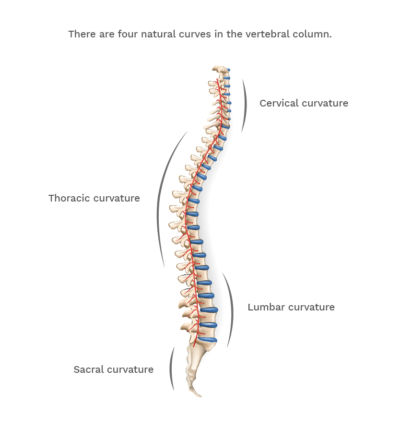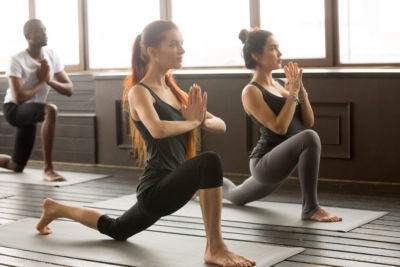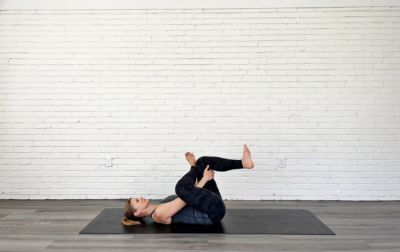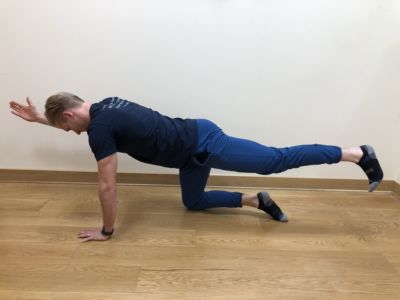You know it. You’ve felt it. You’ve dealt with it. Low back pain can be a real downer, whether you’re feeling it when you’re sitting, standing, or moving around. You aren’t alone — low back pain is the second most common cause of disability in the US. Almost a third of American adults are afflicted with back pain, and among them, 85% suffer from low back pain that is non-specific, mechanical, and without a detectable cause.
Non-specific back pain, even without a singular cause, can typically be traced back to your body’s structure and your daily function. The different parts of your spine, as well as the joints and muscles around it, have an optimal positioning and functioning that exerts the least amount of energy and minimizes strain and stress on your back. When something causes this optimal, healthy positioning to shift or become imbalanced, that’s when you experience low back pain.
In order to look into what specifically may be amplifying your pain or discomfort, it’s important to understand how your spine is structured.
 Getting to Know Your Back
Getting to Know Your Back
According to Dr. Jason Biondo, chiropractor at PALM Health, “Your back is made up of three main regions: the cervical region, the thoracic region, and the lumbar region.” The cervical region spans from the base of your skull to the bottom of your neck. The thoracic region starts where the cervical portion leaves off and ends about halfway down your back. The lumbar section picks up there and leads down to the base of your spine, where it meets the sacrum and coccyx — your tailbone.
These regions each have a natural curve to them that serve as the baseline of your posture. Your cervical spine curves inward, your thoracic spine then curves outward, and your lumbar spine curves back inward. These curvatures are slight and subtle.
“Your goal for optimal spine health and minimizing back pain is to maintain that neutral balance between the natural curves of your spine — especially under load,” says Dr. Biondo. Maintaining those neutral slight curvatures puts your back in the least stressed and most functional, mobile, and stable position. When one or more of the curves becomes too pronounced, it can contribute to back pain and postural issues.
How Your Spine Collaborates With the Rest of Your Body
What does it mean to have functional mobility and stability in your spine? It’s actually related to the mobility and stability of your entire body. Stability and mobility are handled by different joints throughout the body, not just your back. Your cervical spine requires more stability, your thoracic spine requires more mobility, your lumbar spine requires stability, and your hips require mobility.
From top to bottom, the joints of your body alternate between these two responsibilities of stability and mobility. Oftentimes, the areas that require more stability are too mobile, and those that require more mobility are too stiff — causing pain or risk of injury. Part of optimizing the functionality of your back is making sure to maintain the balance between the duties of all of those joints.
When you move around and “load” your back by picking things up and setting them down, bending up and down, or sitting and standing, your spine inevitably has to shift its positioning to accommodate those tasks. But having a stable and functional spine means the regions in your back stay neutral and your joints stay centrated in relation to one another. Unequal load on your joints can cause strain and stress on your ligaments, tendons, and cartilage, most often resulting in back pain. Similarly, the muscles around your spine (your core muscles) play a critical role: when you move and load your back, those muscles have to co-activate to provide support throughout that movement. Imbalances in muscle activity create additional stress on your back.
Imagine you’re bending over to pick up a heavy box. If you curve your spine and lift from your back, you’re more likely to get hurt or experience pain the next day. But, if you maintain a neutral spine, squat down, lift from your legs, and engage your core muscles, you can lift heavier weights and are much less likely to experience pain because your joints are centrated and performing the functions they are meant to perform.
How to Prevent and Decrease Pain
Because most lower back pain is non-specific, the best way to prevent it and work on it is to improve your spine’s stability and functional mobility. Here are the 5 most significant things you can do.
 1. Increase Your Movement
1. Increase Your Movement
You may notice that if you tend to sit for most of the day, whether it’s for your job or otherwise, you probably have increased back pain. Sitting for long periods of time creates additional stress and pressure on your back muscles and spinal disks that can result in an imbalance of your spine’s natural curvature.
“Moving is one of the most important things you can do for back pain,” says Dr. Biondo. When you’re up and moving, you’re increasing your general muscle activation, increasing blood flow and nutrients to the tissues surrounding your spine, and enhancing the flexibility of your muscles, tendons, and ligaments. This will help decrease stiffness, a key contributor to back pain.
If your days are typically very sedentary, try to incorporate as much movement as you can. Take frequent, short breaks to get up, move around, and stretch. Try to get in a walk or do some exercise before or after your work day. Even utilizing a standing desk over a traditional, seated desk will allow for more natural movement throughout the day and relieve some of the additional stress on your back.
2. Self-Correct Your Posture
If you do have to sit for most of the day — especially if you are in front of your computer — it’s important to keep your posture in mind. It’s all too easy to slouch, allow your neck to creep forward, and hunch your shoulders. You’ve likely caught yourself many times ending up in this position.
Think back to the centration of your joints. Imagine that the three regions of your back — cervical, thoracic, and lumbar — are like three gears locked into one another. Because one gear will directly influence the ones into which it is locked, the goal is to have those gears perfectly stacked on top of each other. When you slouch, whether you’re sitting or standing, the gears are not stacked. This, again, uses more energy and creates stress and pressure on your joints and muscles, causing pain and stiffness.
When you are sitting for a long period of time, try to think about keeping those gears stacked so your spine, joints, and muscles hold you upright most efficiently. The same goes for your standing posture.
3. Work on Hip Mobility
Your hips are one of the key joints that influences your spine’s health and needs to be addressed with equal importance. As mentioned earlier, your hips are in charge of mobility. If your hips are tight and immobile, it directly impacts your back.
Imagine you’re sitting at your desk, and you need to lean forward to grab your water bottle. Theoretically, you should be hinging at the hips to complete that movement — meaning the “gears” of your spine stay stacked and straight. However, if you lack mobility in your hips, your back compensates by bending forward to allow you to grab your water bottle. This instantly breaks the balance of your spine’s curvature and puts a load on your lower back. Over time, these movements build pain and discomfort.
 Thus, it’s worth working on opening up your hips so they can function properly to support your spine.
Thus, it’s worth working on opening up your hips so they can function properly to support your spine.  Try the Kneeling Lunge stretch or the Figure 4 stretch pictured here.
Try the Kneeling Lunge stretch or the Figure 4 stretch pictured here.
4. Build Up Core Strength
All of your function leads back to your core. Your core is made up of all the muscles around your spine and abdominal region. Those muscles, along with your diaphragm, work together to create and maintain strength and stability in the center of your body. This drives and stabilizes the rest of your body’s movement, particularly in your back.
When performing any movement, whether it’s part of an exercise, lifting something, or bending down, a stable core will help ensure proper use of your back. Stabilization of your core involves co-activating all the muscles around your spine and abdominal area synergistically. But the goal is for this to happen as naturally and automatically as possible. This is where core strengthening over time comes in.
Including core work in your exercise routine is the number one way to improve stability, because it builds strength in those important muscles. Core exercises are typically simple and use only your bodyweight, so you can do them easily at home without equipment or wherever you like to work out.
 Try the “Bird Dog” exercise from Dr. Biondo, pictured here, to work on enhancing your motor control and developing core stability at the same time. For more helpful tips on core strength and simple exercises you can do at home, read about how to Increase Your Stability Through the Core Four.
Try the “Bird Dog” exercise from Dr. Biondo, pictured here, to work on enhancing your motor control and developing core stability at the same time. For more helpful tips on core strength and simple exercises you can do at home, read about how to Increase Your Stability Through the Core Four.
5. Identify Your Pain Triggers
Most of the time, non-specific low back pain is a result of cumulative, repetitive loads and stressors on your spine. Over time, the repeated stress creates sensitization in your tissues, which is why you feel pain or discomfort. Figuring out what stressors trigger your pain can help you understand what to avoid to stop “picking the scab” of your back pain.
Some of the most common pain triggers are actually intolerances to certain types of movement, the main types being flexion and extension.
Flexion-Intolerant Pain
For example, if you have more pain sitting down versus standing, you likely have flexion-intolerant pain. This is low back pain felt when bending the spine forward. It’s most common in those who spend a lot of time sitting down, particularly with a rounded lower back — i.e., in a constant state of flexion. If this sounds familiar, you may find some relief in working on hip mobility and seated posture (think: stacking the gears of your spine).
Extension-Intolerant Pain
Extension intolerance is the opposite. If you have more pain when standing, you likely fall into this category. This is most common in athletes and individuals whose sports or activities require repetitive extension (bending backward) that strains your spine in the opposite way. Solid core stability may be especially helpful for this type of pain, as it will help train your back against excessive extension and control the forward tilt of your pelvis that can contribute to overextending.
Though low back pain can be a nuisance that makes your day-to-day activities more difficult and uncomfortable, that doesn’t mean you can’t improve it. From movement, to posture, to core strength, to hip mobility, to identifying triggers, there are a multitude of ways you can work on your spine’s functionality in order to manage your pain and prevent more of it in the future. If you understand what constitutes a healthy back, you can make adjustments that will put your daily life back on track.
PALM Health is an innovative, whole-person medical and wellness company that helps people reach and maintain well-being. Our experts in medicine and wellness empower people to transform their health, become more resilient, and feel their personal best in mind and body.








